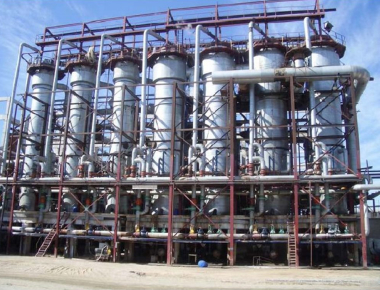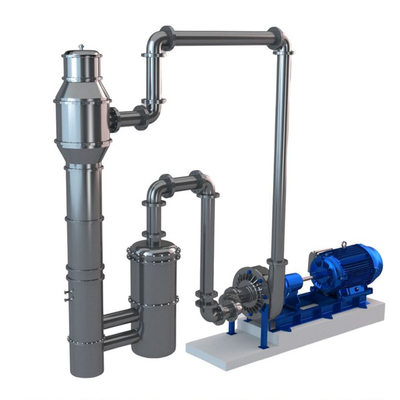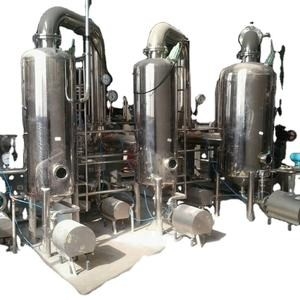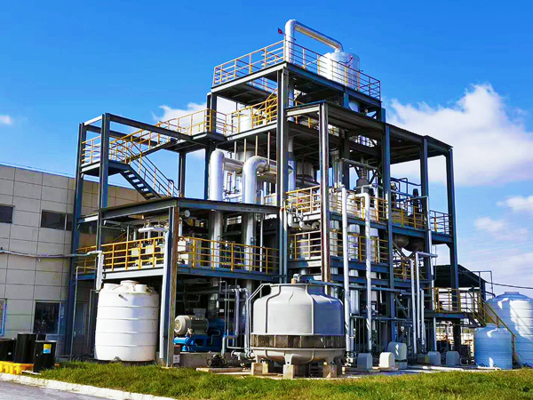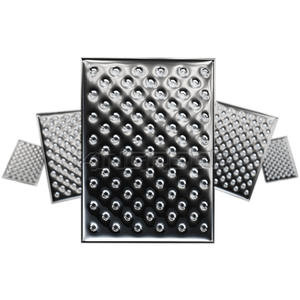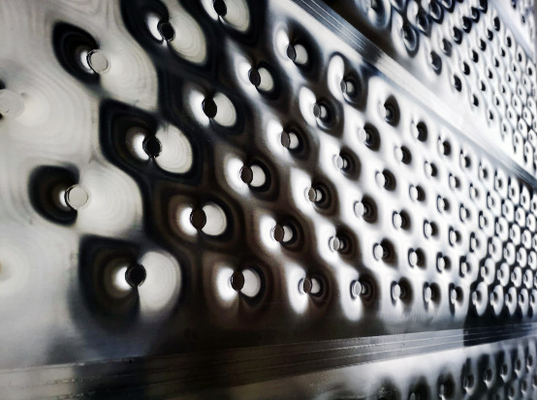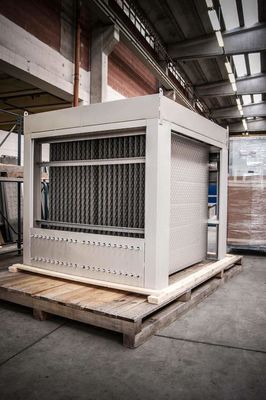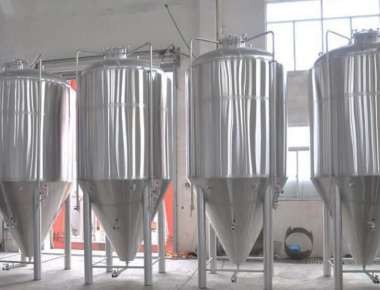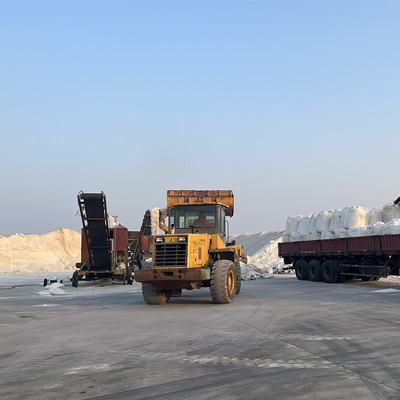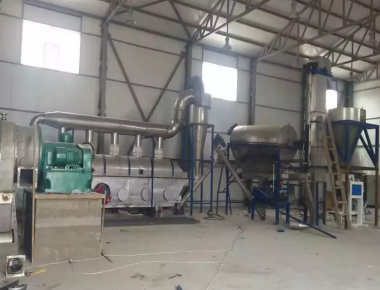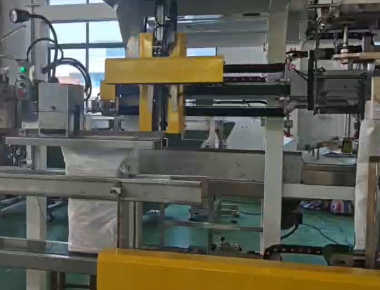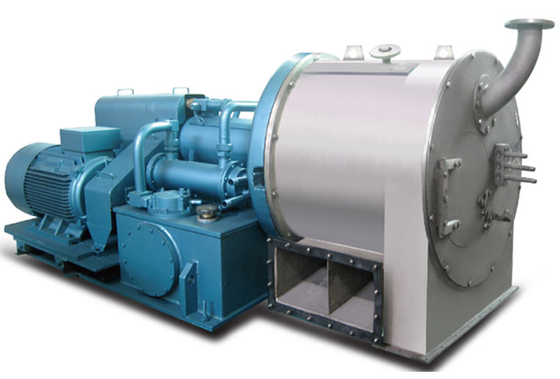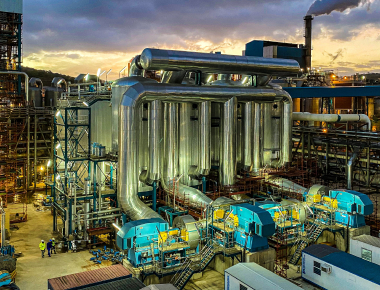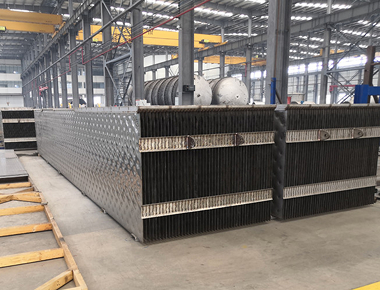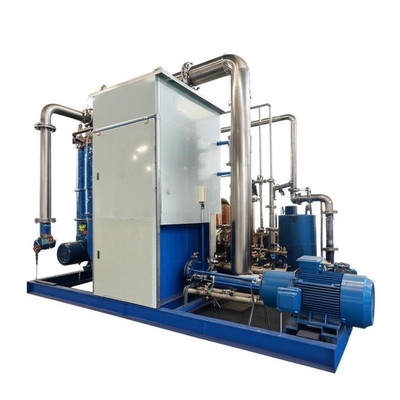Continuous Forced Circulation Brine MVR Evaporator 440V For Seawater Desalination
Engineer-to-order MVR (Mechanical Vapor Recompression) evaporator with forced circulation, designed for continuous seawater/brine desalination and SWRO brine concentration. Tuned for 440V low-voltage grids (50/60 Hz configurable), it recycles latent heat via mechanical recompression to achieve high energy efficiency, stable throughput, and reduced discharge volumes.

Key Benefits
- Higher water recovery: Concentrates SWRO brine to boost overall desalination recovery and cut blowdown.
- Energy savings: Electric-duty MVR minimizes fresh steam after start-up, lowering OPEX and CO₂ footprint.
- Scaling mitigation: Forced circulation maintains high shear and stable ΔT/LMTD to limit CaSO₄/CaCO₃ scaling.
- Corrosion resilience: SS316L/duplex/Ti options for chloride-rich feeds; drainable hygienic layouts.
- Continuous automation: PLC/HMI recipes, alarms, historian, remote support for 24/7 uptime.
Process & Thermal Economy
Secondary vapor is mechanically compressed to raise saturation temperature and reused as the heating medium. High-velocity forced circulation stabilizes heat transfer on saline feeds. Tight control of pressure, ΔT, and residence time enables gentle, efficient evaporation with consistent condensate quality.
Electrical Integration -- 440V
LV integration for 440V (50/60 Hz), with VFD-driven compressor/pumps, soft-start, and optional AFE/harmonic filters for grid compliance. MV step-up options available on request.
Materials & Cleanability
Wetted parts in SS316L/duplex or titanium for chloride service; anti-scale dosing, validated CIP, sloped piping, and large clean-outs support long campaigns and fast turnarounds.
Process Overview -- Seawater / SWRO Brine
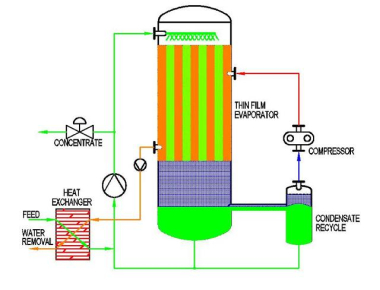
- Pretreatment: screening/filtration, antiscalant/pH trim to protect exchangers and compressor.
- MVR evaporation (vacuum): compressor discharge pressure sets ΔT; shell vacuum defines boiling point.
- Condensate polishing: optional filters/RO/UV to meet reuse or potable/industrial water specs.
- Concentrate routing: to crystallizer or regulated discharge; integrates with ZLD where required.
- Automation: recipes for seasonal salinity/temperature shifts; alarm interlocks and remote diagnostics.
Key Components
- MVR evaporator (forced-circulation) with circulation pump and vapor-liquid separator
- Mechanical vapor compressor (turbo/Roots) with VFD for ΔT/throughput control
- Main heater, preheaters, condenser, vacuum/NCG handling skid
- PLC/HMI/SCADA; instruments (T/P/flow/cond/level); historian & remote access
- CIP skid; anti-scale dosing; optional condensate polishing filters/RO/UV
Performance & Sizing
| Parameter |
Typical Range* |
| Power supply |
440V LV, 50/60 Hz (site-configurable) |
| Operation |
Continuous, 24/7 |
| Electric use (MVR) |
~15-40 kWh per ton of water evaporated (duty/CR dependent) |
| Shell pressure (vacuum) |
~6-25 kPa(abs), feed/ΔT dependent |
| Condensate quality |
Low conductivity; polish to reuse/potable/industrial spec |
| Materials |
SS316L / duplex / Ti; Hastelloy on request |
*Performance depends on feed salinity/temperature, fouling tendency, compression ratio, and heat-transfer design.
FAQ
Can it integrate after SWRO to raise recovery?
Yes. As a brine concentrator, MVR increases overall plant recovery and reduces brine volume for discharge or ZLD.
How is scaling controlled with seawater brine?
Through pretreatment, optimized ΔT/LMTD and velocity, antiscalant dosing, and scheduled CIP based on fouling indicators.
Is 440V mandatory?
No. Systems can be configured for 380-480V LV or MV (3.3-11 kV) depending on site power and compressor sizing.
Application


 Your message must be between 20-3,000 characters!
Your message must be between 20-3,000 characters! Please check your E-mail!
Please check your E-mail!  Your message must be between 20-3,000 characters!
Your message must be between 20-3,000 characters! Please check your E-mail!
Please check your E-mail! 
